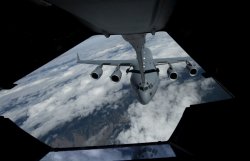Whilst it’s true that ‘fuel is fuel’ the effective cost of that fuel varies dramatically. If you’ve had to fly a second aircraft to (for example) HNL to act as a tanker, every kilo of fuel that if offloads has a cost that must include the positioning, and post, flights. I can see how it could easily get to 14x.
But..if you want to make a refuelling capable A330 go about an extra 1,000 nms, there are a number of ways of looking at the problem.
1. You could refuel towards the end of the journey. The aircraft will always need some form of diversion airfield (in case the tanking can’t happen), but a 767 could get across the Pacific, so I assume an A330 would come close. So, tank somewhere around the US west coast. Problem is that you need a tanker, so you could position one of your own (eek $), or ask the USAF nicely for one of theirs (possibly less eek $).
2. Refuel somewhere near Hawaii. Same issues with having a tanker in the first place. You won’t need to load the aircraft with as much fuel out of Oz, but the savings are trivial.
3. Refuel shortly after top of climb. Don’t start with a full fuel load, get it after you’ve reached cruising altitude (actually a bit less, as you can’t tank there). The tanker won’t have to fly very far from home, and you’ll have an A330, with full fuel, and at cruise altitude, within a 1,000 miles of your start point. I’ll bet it can comfortably go the whole way now.
The dynamics of air to air refuelling aren’t necessarily obvious. Look up the way the Vulcan got to the Falklands for an extreme case.















